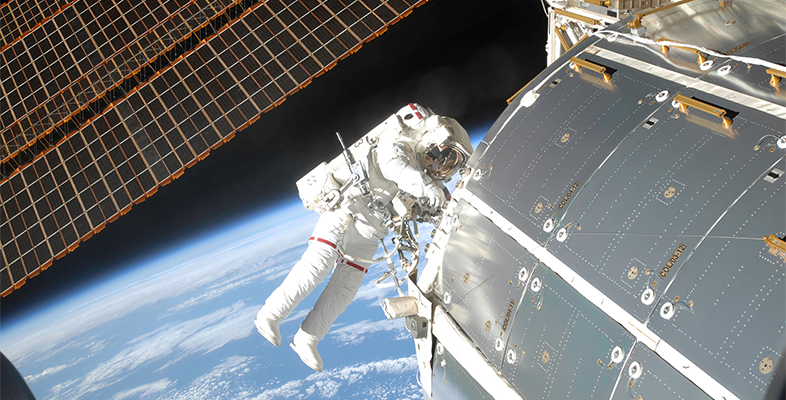2.2 PROMPT criteria
Table 2 is the course team’s approach to using the PROMPT category for Videos 1, 2 and 3 in Activity 1. How does this compare with your findings?
| PROMPT criterion | Resource 1 ‘Four ways space is trying to kill you’ | Resource 2 ‘Three big discoveries on the ISS’ | Resource 3 ‘Ten more years’ |
|---|---|---|---|
Presentation Is the information presented and communicated clearly? Consider the language, layout and structure. |
Not clearly presented. Video is 3 minutes and 3 seconds long. |
Quite clearly presented. Video is 4 minutes and 1 second long. |
Clearly presented. Video is 4 minutes and 40 seconds long. |
Relevance Is the resource relevant to the topic you are researching? Look at the introduction or overview to find out what it is mainly about. |
How space is dangerous to humans. Yes, this is relevant as it discusses extremely low pressure, vision problems, wasting effects and cell damage from radiation. |
Important discoveries on the ISS. Yes, it discusses the Alpha Magnetic Spectrometer (AMS), long-term effects of living in space and cancer research. |
The future of the ISS. Yes, it introduces the precision robotic arm, research into antimatter particles, long duration space travel, the Cold Atoms lab (CAL), quantum matter, Earth science and commercial space ventures. |
Objectivity Is the resource biased, or motivated by a particular agenda? Is the language emotive? Are there hidden, vested interests?
|
No evident bias. Quite excited and rapid delivery. |
No evident bias. Excited and rapid delivery. |
No evident bias. Calm and measured delivery. |
Method: for research reports Is it clear how the data was collected? Were the methods appropriate and can you trust it?
|
No external evidence of statements for less than 90 seconds in a low-pressure environment, 60% of NASA astronauts having reduced vision, 2% per month less bone material, 253 days to travel to Mars, and a 3-foot-thick metal wall on ISS to replicate the Earth’s protective atmosphere (which is equivalent to whole body CT scan every 5 to 6 days). |
No external evidence of statements that the ISS cost US$140–160 billion, it took 13 years to build with the input from 16 nations, the inference of dark matter in the 1930s (accounting for 23% of the Universe) and the detection of billions of gamma-ray particles by the AMS. |
No external evidence of statements that the ISS was extended until 2024, that the research on board the ISS has mitigated 21 out of 32 known human health risks with long-distance space travel, the AMS programme, and CAL established in 2016. |
Provenance Is it clear where the information has come from? Can you identify the author(s) or organisation(s), and are they trustworthy? Are there references or citations that lead to further reading, and are they trustworthy sources? |
‘What the stuff?’ No references provided. |
Scishow No references provided. |
Science @ NASA No references provided. |
Timeliness How up-to-date is the material? Is it clear when it was written? Does the date of writing meet your requirements, or is it obsolete? |
16 March 2015 16 000+ views Still valid |
6 September 2013 472 000+ views Still valid |
13 February 2014 44 000+ views Still valid |
